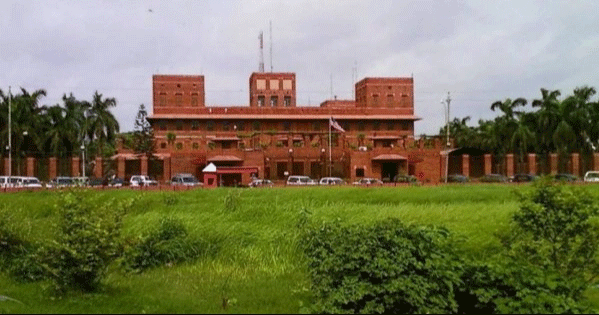Load-shedding on despite double power capacity
Mahfuz Emran : Power and energy is one of the priority sectors of the Awami League government. The government has celebrated success in this sector with much fanfare. The power generation capacity is said to be increased to 25 thousand megawatts. Delivering electricity to every home was an election promise. 100 percent electricity supply is being demanded in the country in 15 years. There is also talk of sending loads to museums. However, citizens in the capital as well as in villages have to endure severe load shedding throughout the year.
India’s Adani power plant has come into commercial production this year. Efforts are on to speed up the construction of Rooppur nuclear power plant.
However, overall the year 2023 was not auspicious for the power and energy sector. The year has started with three consecutive hikes in electricity prices. The price of industrial gas has gone up by a record amount. The people of the country have to endure long and frequent load shedding of electricity along with gas and fuel crisis throughout the year. Hour after hour load shedding has occurred in villages and towns. Village loadshedding was exceeded by 12-15 hours. The Minister of State for Power, Energy and Mineral Resources Nasrul Hamid himself then described the ongoing load shedding as ‘unbearable’.
The government hoped to reduce load-shedding around the power sector’s mega projects-Payra, Rampal and Adani power plants. At the same time there was a promise of uninterrupted power supply.
But in reality, it did not happen. Rampal and Payra power plants were closed for months due to energy crisis. There has also been an incident of shutdown of supply from Adani’s power plant due to inability to pay bills due to dollar crisis.
The issue of not being able to pay oil import bills due to the dollar-crisis was a hot topic throughout the year. The shadow of the dollar-crisis has also cast a shadow on LNG imports. This has affected the industrial production.
According to the government, the power generation capacity in the country is more than double the demand. However, there was hourly load shedding throughout the summer. Due to the energy crisis, the power situation is such that load shedding has reached 3,500 to 4,000 MW across the country in summer.
Unable to bear the pain of load shedding, the electricity workers had to fall under the wrath of the customers. Electricity office vandalized. Attempts were made to keep production running by bringing in coal and LNG to deal with the situation. But when the arrears become high, suppliers stop supplying coal and LNG. This worsens the load shedding situation. Failing to handle the situation, the power department has also wished for rain!
Electricity Secretary Habibur Rahman told recently, “It is hot in the country. The ongoing load-shedding situation is unlikely to improve unless the heat subsides. Our hope is that it will rain around 10-12th of this month. After that maybe the load shedding can reduce a little.
If the loadshedding situation becomes unbearable, the Prime Minister’s advisor on electricity, energy and mineral resources Taufiq-e-Ilahi Chowdhury also proposed to stop the use of electricity during the day.
According to the Department of Electricity, the average daily demand for electricity in the country is 12,000 MW. And the production capacity is about 25 thousand MW. As such, the production capacity is more than double the demand.
Still, why loadshedding, energy expert Dr. Ijaz Hossain said, what has happened in this sector is like putting the cart before the horse! There is no information on fuel resources. But one power plant after another has been installed. There was no effective move to meet the demand of power plants by extracting gas and coal from own sources. As a result, thousands of crores of rupees had to be paid for the power plant.
Year-round dollar-crisis
Bangladesh’s power and energy sector is import-dependent. The fragility of this sector becomes evident when the price of energy products increases in the global market. Due to Russia-Ukraine war, the price of gas, coal and fuel oil increased, Bangladesh fell into crisis. Acute gas and electricity shortages occur in residential and industrial areas.
With the increase in the value of the dollar, due to the foreign exchange crisis, the government once had to tap into the reserves to meet the import costs. At one stage it was no longer possible to meet the price of fuel oil, coal and LNG. Petrobangla and BPC had to face fines for not paying bills on time. At the same time came the threat of stoppage of supply. A source in the Energy Department told that the amount owed to suppliers for fuel products is about $200 million.
Adani Power
Adani’s 1,600 MW power plant has been accused of opacity in everything from contract signing to commercial production. Before the start of electricity supply to Bangladesh on a commercial basis, there were allegations against Adani of concealment of duty-tax concessions and setting excessive prices of coal. Among them, the first unit of Adani’s power plant located at Godda in Jharkhand started supplying electricity to Bangladesh on a commercial basis on March 6. The power department initially denied but later admitted the matter.
A month later, on April 6, the second unit of this power plant also started commercial production. However, nothing has been officially announced by the Bangladesh government in this regard. Commencement of commercial production of the first and second units of this power plant came to the notice of Adani’s letter to Mumbai Stock Exchange and National Stock Exchange of India Limited.
President Joe Biden tests positive for COVID-19 while campaigning in Las Vegas, has ‘mild symptoms’
International Desk: President Joe Biden tested positive for COVID-19 while traveling Wedne…







